For starters this is one of the most popular names among American seasoning mixtures of 20th century, it has been used for generations. Beau Monde is loosely defined as a spice mix that commonly contains: salt, sugar, MSG and herbs. The commercially made product is mostly just that: salt, sugar, MSG and onion powder made from toasted onions.
As a seasoning it compliments anything savory. It goes well with meats, egg dishes, buttered steamed vegetables, and generally when added to any cooking fats. For example if you mix 1 tsp for each 30g of mayonnaise and a little squeezed lemon juice you got an outstanding sandwich spread. It goes well with ground meats, you can try adding 1 tbsp of seasoning per 230g of ground meat. The most notable use of this blend was by Ernest Hemingway for his hamburger recipe.
The unique recipe version presented here is a complex spice blend developed by late chef Greg Easter. Chef Easter pioneered the use of natural ingredients to simulate artificial flavors that most people for obvious reasons got accustomed to. It was sorts of reversed engineering with a result that is the best of both worlds: good recognizable flavour derived by use of natural ingredients.

Without getting into deeper technicalities I will just say that chef Easter found the way to trap flavour molecules before they are oxidized or blown off in the air during cooking. For that purpose he used a flour, but not wheat flour since it doesn’t function well as an absorbent. Instead he used flours with more protein or fat, such as Amarath flour in this recipe.
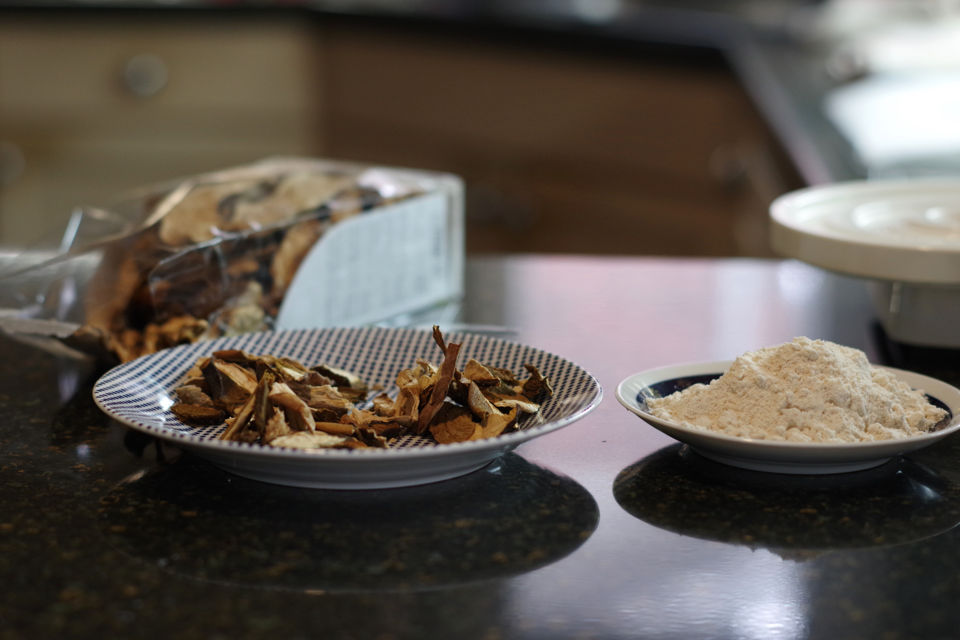
Amarath is a gluten free flour and was a staple food of the Aztecs. This flour has high fat content (7 times higher than wheat all purpose flour) which is necessary in order to absorb the compounds in the arugula leaves and the bitterness is complimentary (unlike some other flours such as the oat flour for example).
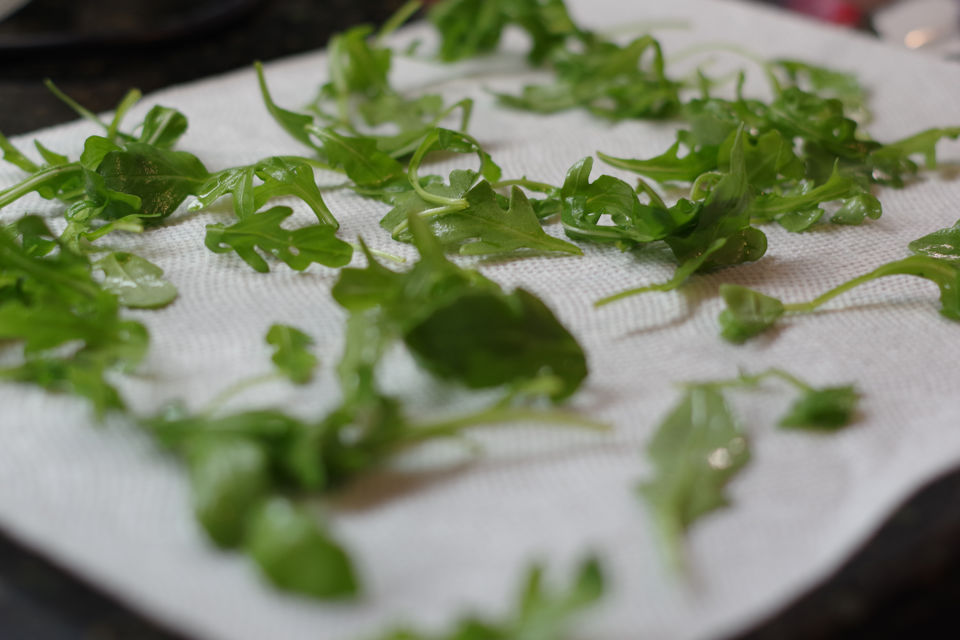
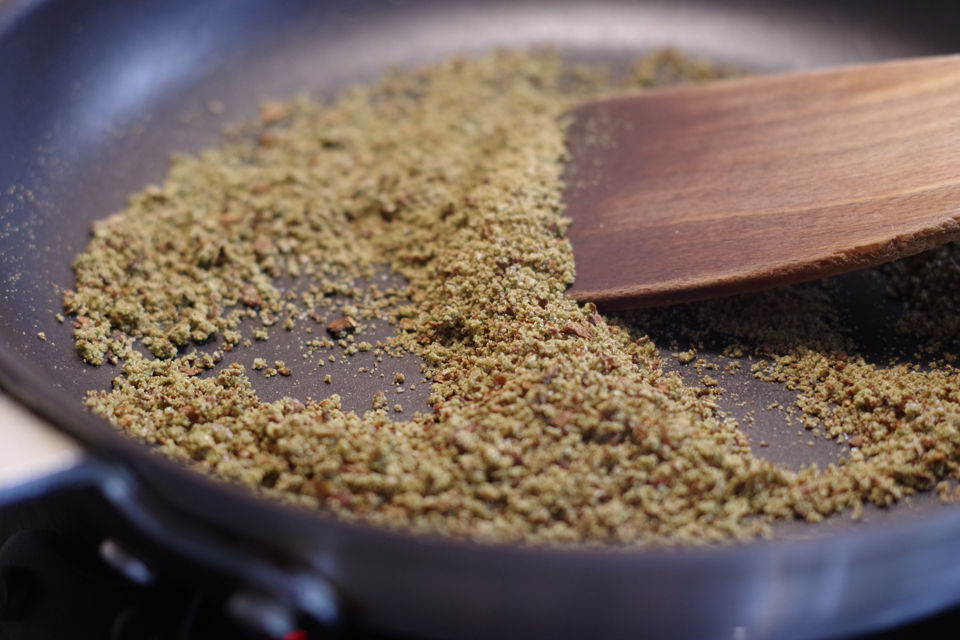
Amarath flour is widely available in health food stores or in Bulk Barn in Canada.
It is easy to make seasoning, from start to finish it’s about 1 hour of work.
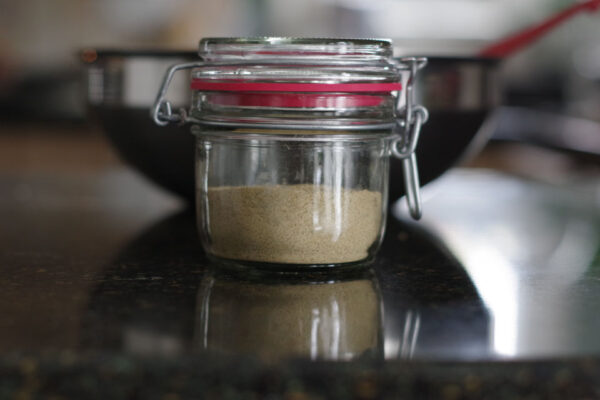
| Prep Time | 30 min |
| Cook Time | 15 min |
| Passive Time | 15 min |
| Servings |
tbsp
|
- 30 g Amarath flour
- 15 g Arugula
- 3 tbsp dried porcini mushrooms
- 1 tsp fine sea salt
- 1 tsp granulated sugar
- 1 tsp parsley dried
- 1 tsp marjoram dried
- 1 tsp celery leaves dried
- 1 tsp carrot dried optional
- 3/4 tsp MSG
- 1/2 tsp garlic powder
- 1/2 tsp crushed red pepper flakes
- 1/4 tsp ground Ginger
- 1/4 tsp ground cinnamon
Ingredients
Ingredients
|

|
- In a food processor process Amarath flour, salt, washed and dried (with paper towel) arugula leaves and crumbled porcini mushrooms. Make it as fine as you can with porcini mushroom pieces ending being slightly bigger than powder. Note: Do not be tempted to grind porcini mushrooms in a spice grinder. That will have them easily burn out in the next step.
- Transfer the mix to large 28-30 cm (11"-12") non stick skillet.

- Heat up skillet over medium low heat (3 out of 10) to about 88ºC (190ºF), keep stirring constantly with flat wooden spoon. Once you hit the set temperature maintain the process for 15 minutes or until everything becomes a dry powder. Take off heat and transfer the mix to a medium size mixing bowl, set aside. Note: Temperature can go even higher up to 120ºC (248ºF) or even slightly higher and that is ok. Just lift the skillet of the heat for a few seconds and keep stirring. The idea is to completely dry out the arugula where it will become a light and crumbly powder, without burning it and while maintaining the cooking temperature as close to 88ºC as possible.

- Measure and add the rest of the dried spices to the bowl, mix everything together while everything is still warm. Set aside for 10-15 minutes or until it cools down to room temperature.
- Grind the mixture in a fine powder by using a spice grinder.
- Pass the powder through a sieve to filter out any left out large particles.

- Transfer the seasoning into a sealed jar. Store in the refrigerator for up to 2 months.

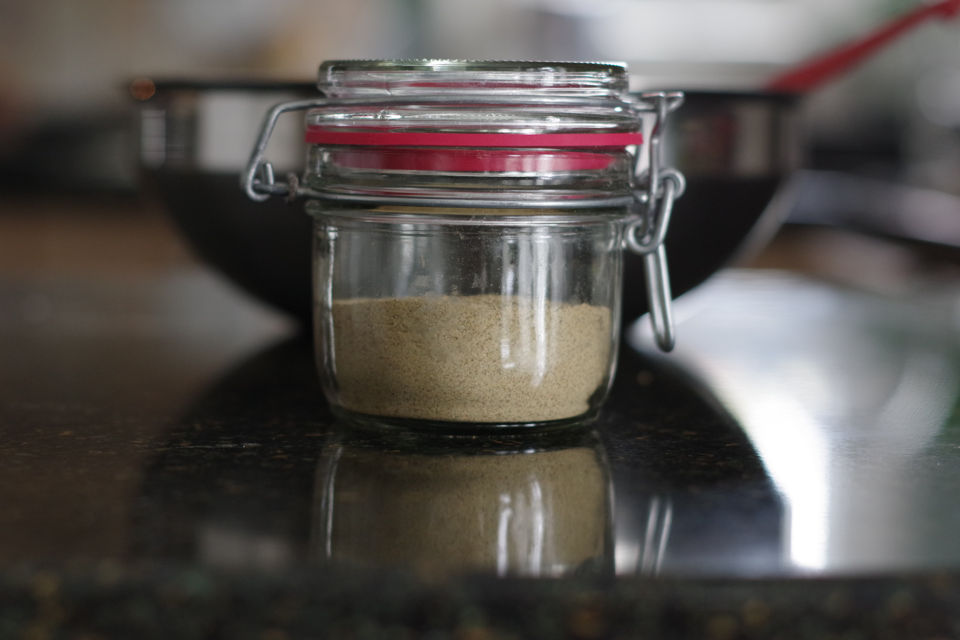
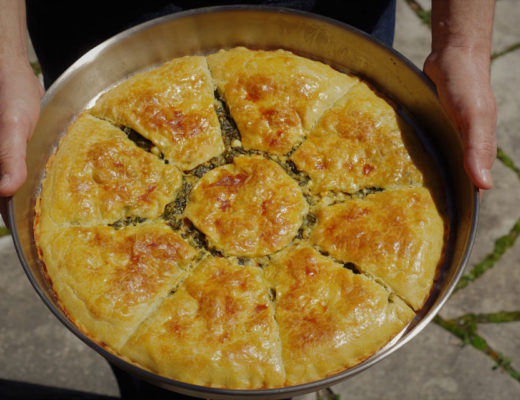

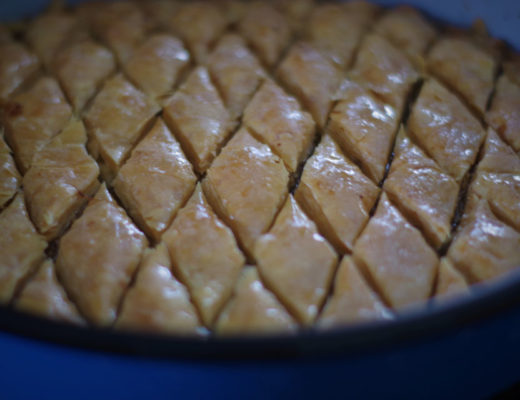
No Comments